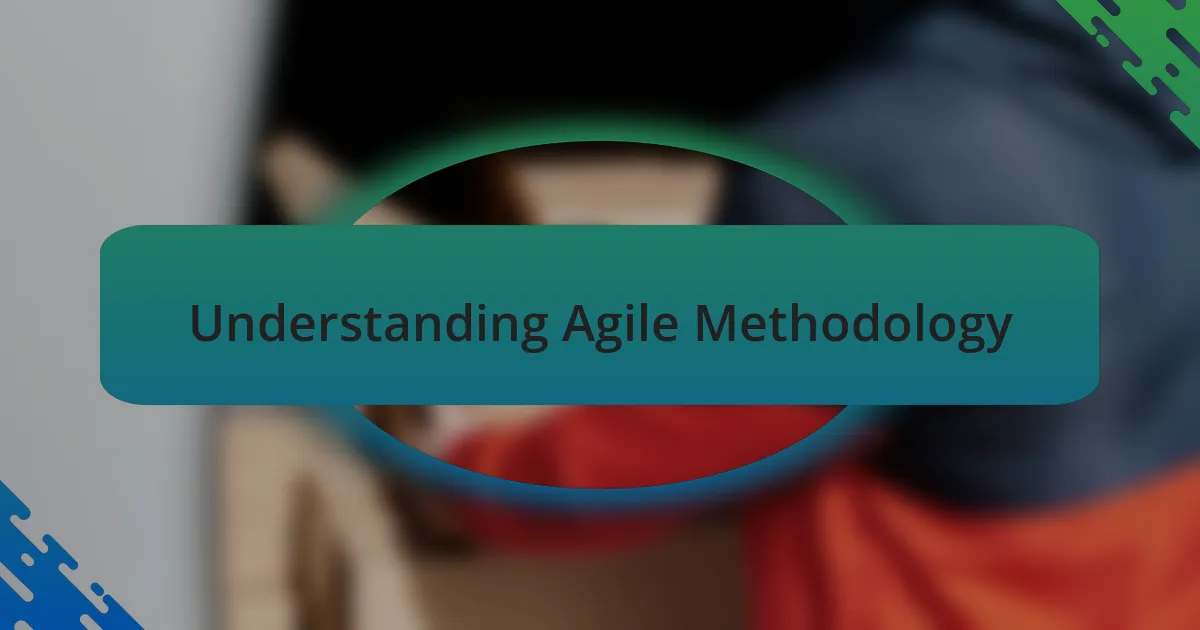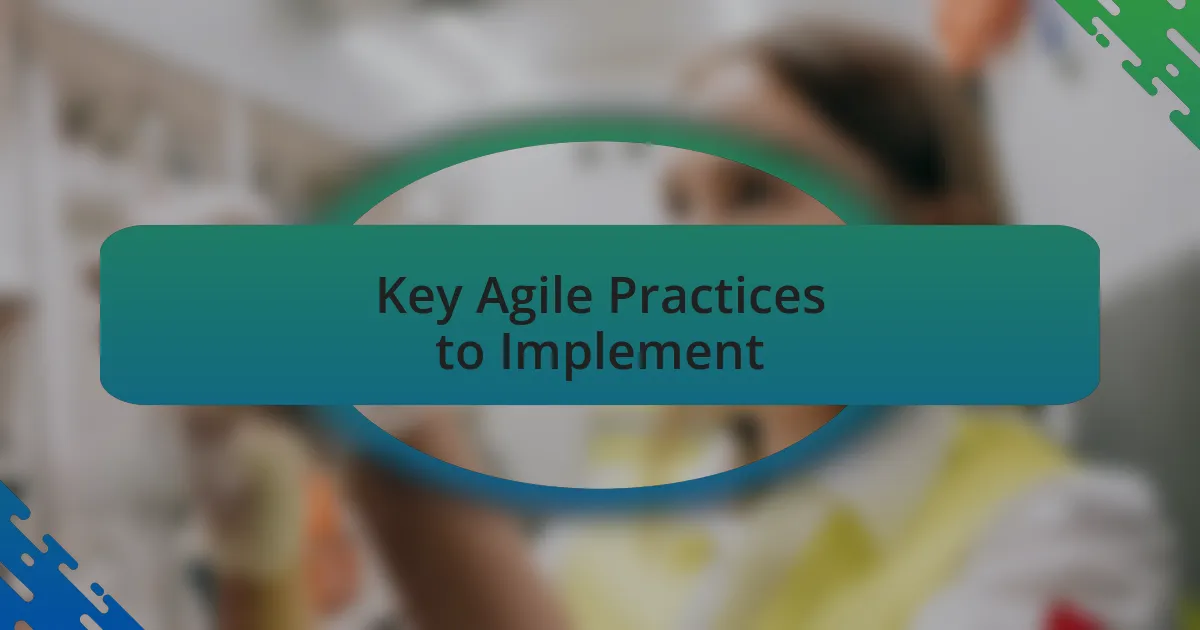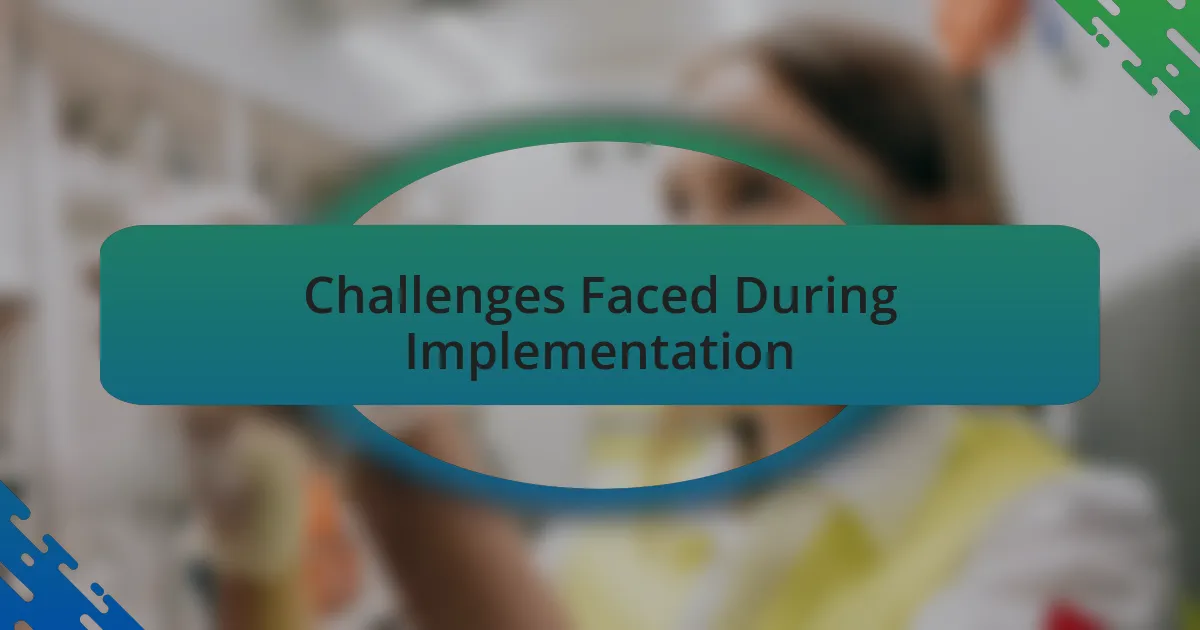Key takeaways:
- Agile methodology fosters collaboration and adaptability, enabling teams to deliver customer value quickly through iterative processes.
- Key practices like daily stand-ups, user stories, and retrospectives significantly enhance teamwork and product focus.
- Assessing team readiness and addressing concerns early can facilitate smoother transitions to Agile practices.
- Measuring success through metrics such as sprint velocity and team satisfaction is essential to understanding Agile’s impact.

Understanding Agile Methodology
Agile methodology is essentially a collaborative approach that values adaptability over strict adherence to predefined plans. I recall when my team first embraced Agile; we were hesitant, fearing that it might lead to chaos rather than structure. But adopting Agile actually encouraged us to communicate more openly, fostering a collaborative environment that I hadn’t experienced before.
One of the core principles of Agile is the iterative process, where projects are broken down into smaller, manageable parts. I vividly remember our first sprint review; seeing our progress laid out on a board was a revelation. It made our achievements tangible and allowed us to swiftly adjust our direction based on real feedback. Have you ever felt that rush of accomplishment when tackling a complex problem piece by piece? That’s the essence of Agile.
Agile also emphasizes delivering value to the customer quickly, which can be incredibly fulfilling for a team. I found that focusing on customer needs shifted our mindset from merely completing tasks to truly creating solutions. In my experience, when team members see how their work directly impacts users, it ignites a passion that enhances overall productivity. Wouldn’t you agree that having a clear purpose makes the work much more rewarding?

Key Agile Practices to Implement
Agile practices revolve around daily stand-ups, which may seem simple but are invaluable. I recall our initial stand-ups, where we spent too much time sharing updates rather than focusing on what was next. Over time, we learned to keep these sessions concise—merely 15 minutes to discuss progress, roadblocks, and plans for the day. It felt invigorating to stay aligned, and it transformed our sense of teamwork. Doesn’t it feel better to start the day with a clear game plan?
Incorporating user stories became another game-changer for us. At first, we struggled to communicate the requirements effectively and often found ourselves going in circles. By crafting user stories from the perspective of end-users, we could visualize their needs and priorities clearer than ever. This shift fostered empathy within our team and guided our decisions), compelling us to ask questions like, “What does our user really need?” As a result, our products became more user-centric, driving better engagement.
I also can’t stress enough the importance of retrospectives. Initially, we viewed these as mere formalities, but they evolved into powerful tools for reflection. I remember one particularly eye-opening session where we unearthed underlying frustrations about our workflow. By addressing these concerns openly, we fostered a culture of continuous improvement. Have you ever felt that magic when a team genuinely embraces feedback? It’s a transformative experience that not only refines processes but also strengthens relationships within the team.
Assessing My Team’s Readiness
Before diving into Agile practices, I realized it was crucial to assess my team’s readiness for this transformation. I held informal discussions with team members, asking about their comfort levels with change and their previous experiences in adaptive environments. This in-depth chat not only gave me insights into their readiness but also set the tone, building a sense of collaboration right from the start.
I vividly remember a moment when I approached one of our more skeptical developers. His hesitance whispered a truth I had overlooked—change isn’t just about implementing new processes; it’s about ensuring the team feels heard. We unraveled the fears he carried about Agile’s demands and together outlined a strategy to ease the transition. Didn’t I wish I had addressed such concerns earlier? It was a turning point for us, illustrating that understanding individual readiness fuels collective success.
Additionally, I created a simple survey to gauge everyone’s perspectives on Agile methodologies. It was enlightening to uncover a mix of enthusiasm and apprehension. When I analyzed the results, I realized that support and education would be key components in our journey. How much easier would things have been if we had a clear sense of the team’s readiness before trying to implement Agile? This experience taught me the value of listening and adapting my approach to meet my team’s unique needs.

Challenges Faced During Implementation
Transitioning to Agile isn’t a walk in the park, and I quickly discovered this when our first sprint planning session turned into a chaotic affair. I remember a particular moment when team members clashed over priorities, revealing a critical misalignment in our understanding of Agile’s collaborative nature. This initial discord taught me that shared knowledge about Agile principles was necessary before we could function smoothly as a unified team.
As we continued our implementation, resistance began to bubble up from a few quarters. I was surprised how some team members preferred their comfortable routines, fearing they might lose control over their work. I often found myself wondering—how do you motivate someone resistant to change? Engaging in one-on-one dialogues helped, but it was a tough reminder that overcoming such challenges requires empathy and persistence.
Another hurdle we faced was the balancing act of Agile meetings amidst tight deadlines. I vividly recall a story where a daily stand-up was barely fifteen minutes long yet seemed to stretch into eternity due to distractions and side conversations. I realized that we needed to refine our focus to ensure that every minute counted. It made me question—how can we cultivate discipline in a flexible framework? The answer lay in continual reinforcement of the Agile values, ensuring everyone remained committed to our shared goals.

Measuring Success of Agile Adoption
Measuring the success of Agile adoption can feel daunting, but I found that focusing on specific metrics made the process clearer. For instance, tracking the velocity of our sprints provided tangible evidence of our progress. It was fascinating to see how, over time, our team became more reliable and productive, which ultimately boosted everyone’s confidence in the new methodology.
One critical aspect to consider is team satisfaction. I remember conducting a survey after a few iterations, curious to understand how everyone felt about the changes. The results were eye-opening. While some team members appreciated the increased collaboration, others struggled with the new pace. Seeing those mixed feelings reminded me of the importance of creating an environment where feedback is valued, ensuring team members feel heard while we adapt continuously.
Another significant indicator I looked at was our ability to deliver value to stakeholders. Reflecting on one particular project, we shifted our focus to releasing a minimum viable product (MVP) earlier than planned. This shift not only allowed us to gather real-time feedback but also showcased the advantages of Agile in quick cycles of improvement. I couldn’t help but think—how often do we get to experience such immediate validation of our efforts? It was a rewarding reminder that Agile isn’t just about processes; it’s about creating value in real time.